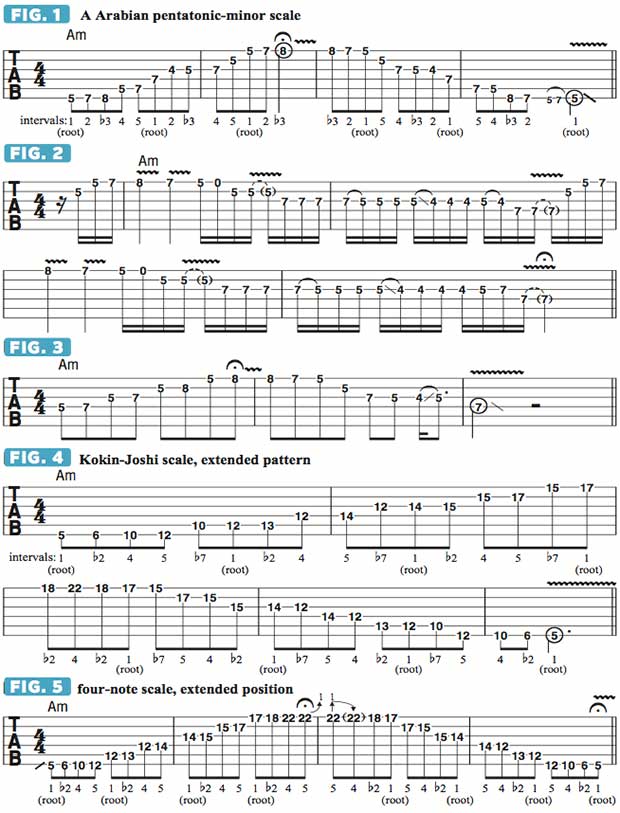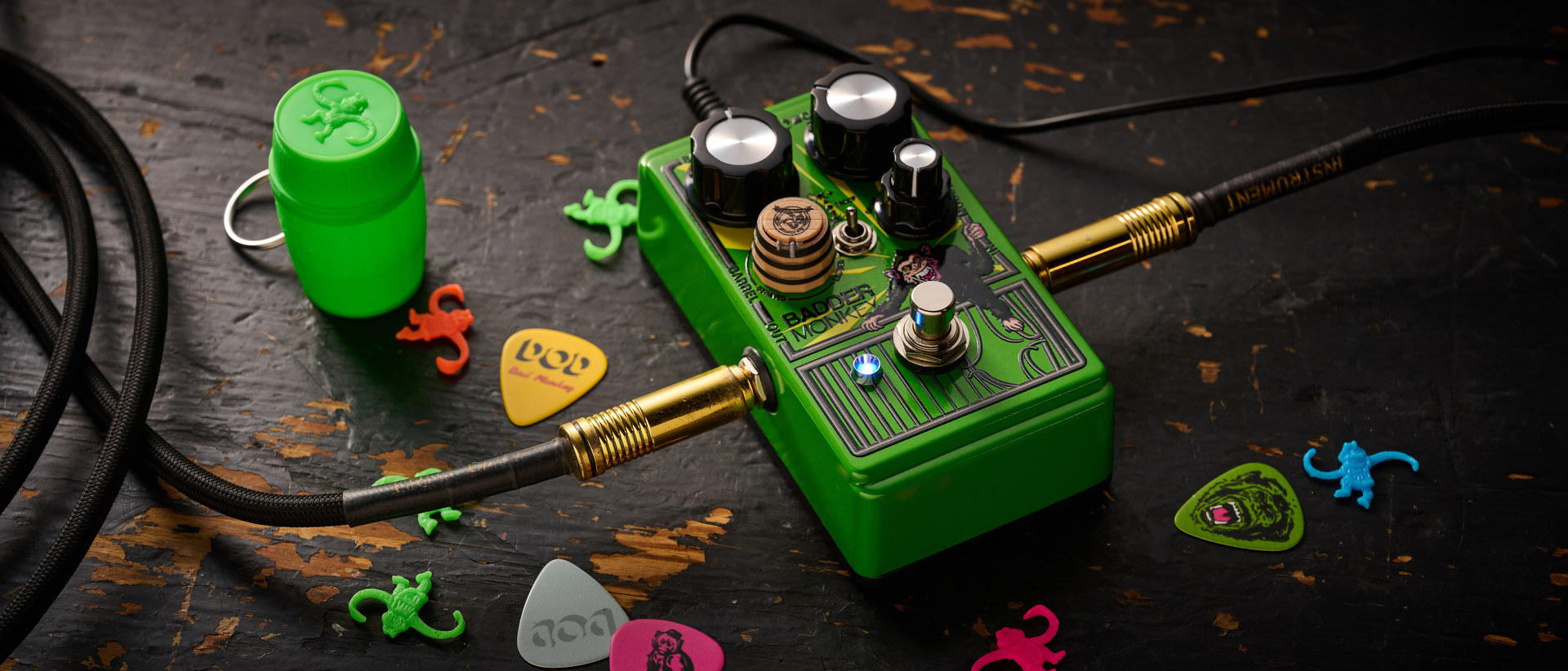Examining World-Music Scales Used in Metal Soloing, Part 2
Last time, I introduced a few unusual, exotic scales that I find useful and worthy of thorough examination for metal soloing.
Two of my favorite metal guitar players, Marty Friedman and James Murphy, have distinguished themselves with their incorporation of such exotic scales into their solos.
The scales I’ve been discussing thus far find their roots in Arabian and Japanese music, and I’d like to continue this month with a look at another Arabian scale, Arabian pentatonic minor.
As its name implies, Arabian pentatonic minor is, like the standard minor pentatonic scale, a five-tone scale (penta means five and tonic means tone), but it offers a slight twist. The scale degrees of minor pentatonic are 1 (the root), b3 (flat three), 4, 5 and b7 (flat seven).
Arabian pentatonic minor is nearly identical to minor pentatonic, except the flat-seven is omitted and replaced by the major second (2). A minor pentatonic is comprised of the notes A, C, D, E and G; A Arabian pentatonic-minor is spelled 1 2 b3 4 5 and is comprised of the notes A, B, C, D and E (see FIGURE 1).
FIGURE 2 offers a melody line based on the Arabian pentatonic-minor scale. At the beginning, I make a point to emphasize the second, B, by sustaining it and adding vibrato. Later in the example, the second is used more as a passing tone between the b3, C, and the root, A.
A good way to incorporate Arabian pentatonic minor is to use it in conjunction with minor pentatonic, as I demonstrate in FIGURE 3 by ascending within minor pentatonic and descending within Arabian pentatonic minor.
All the latest guitar news, interviews, lessons, reviews, deals and more, direct to your inbox!
Let’s wrap up this month’s lesson with a review of the exotic scales covered last month. FIGURE 4 offers an extended fretboard pattern for the Kokin-Joshi scale (spelled 1 b2 4 5 b7) that begins in fifth position and works its way all the way up to 19th position and back. Play through this extended pattern slowly and carefully at first, then see how quickly and seamlessly you can run through it. As you will find, it sounds very unusual and will add a cool, exotic flavor to your improvisations.
FIGURE 5 presents a similarly extended pattern of the four-note scale, spelled 1 b2 4 5 and consisting of the notes A, Bb, D and E. This sparse scale’s minimalist sound and open fourth interval (between 5 and 1) encourages large jumps through different octaves. Finally, FIGURE 6 shows an extended pattern of the Arabian major scale (spelled 1 b2 3 4 5 b6 7).
The thing I especially like about this scale is the sound of the flatted second, Bb in this case, against the major third, C#, and likewise the sound of the flatted sixth, F, against the major seventh, G#. Overall, the scale strikes an interesting balance between minor and major tonal qualities, which can be exploited creatively to create unusual, jarring effects.


